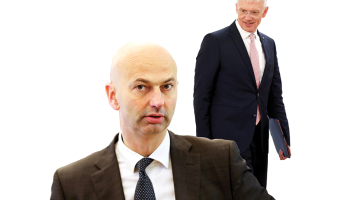
Foto: Andrejs Terentjevs, F64
On average absolutely nothing is happening to Latvian prices right now - in October annual inflation was 0.0%, see Figure 1. Still, many feel convinced that inflation will soar after euro introduction in less than a month's time. This entry tries to follow up on an earlier piece from March this year.
Figure 1: Inflation in Latvia since 2010
Source: Central Statistical Bureau
I don't have a crystal ball from which to access what will happen to inflation in 2014 and neither does anyone else but perhaps useful information could be derived from looking at Estonia's experience before and after joining the Eurozone on 1 January 2011.
Estonia's entry into the Eurozone was associated with much hype about rising inflation. Figure 2 shows that this was partly true - Estonian inflation rose in the year leading up to Eurozone accession; after joining inflation no longer increased but remained at its relatively high level of around 5% after which it has come down again. Will Latvia have a similar experience? The answer is a clear no.















